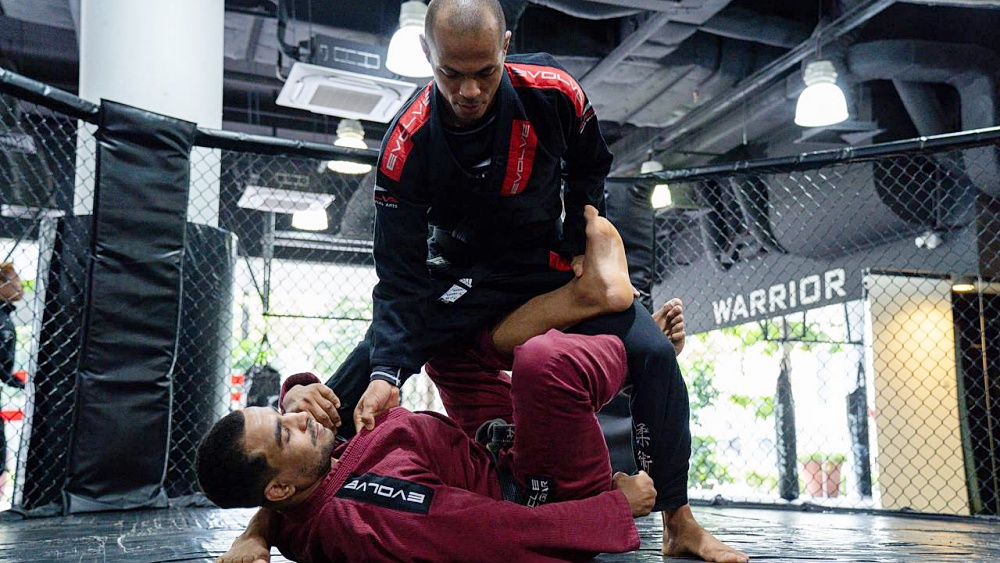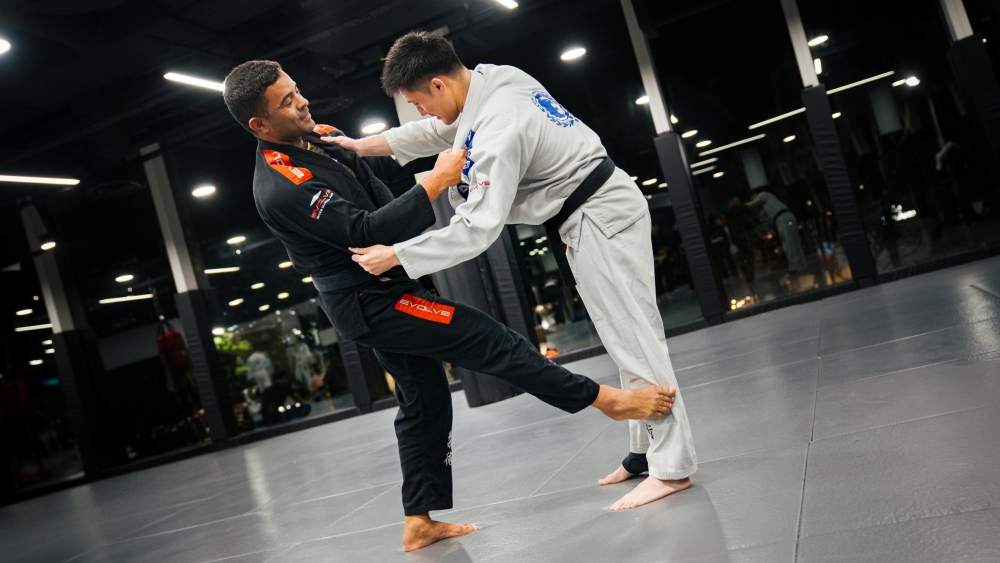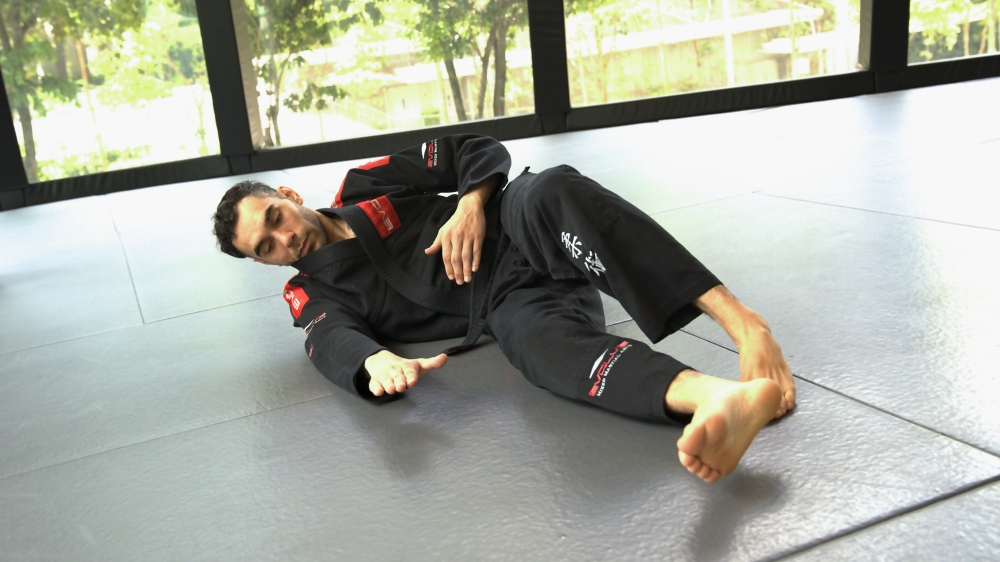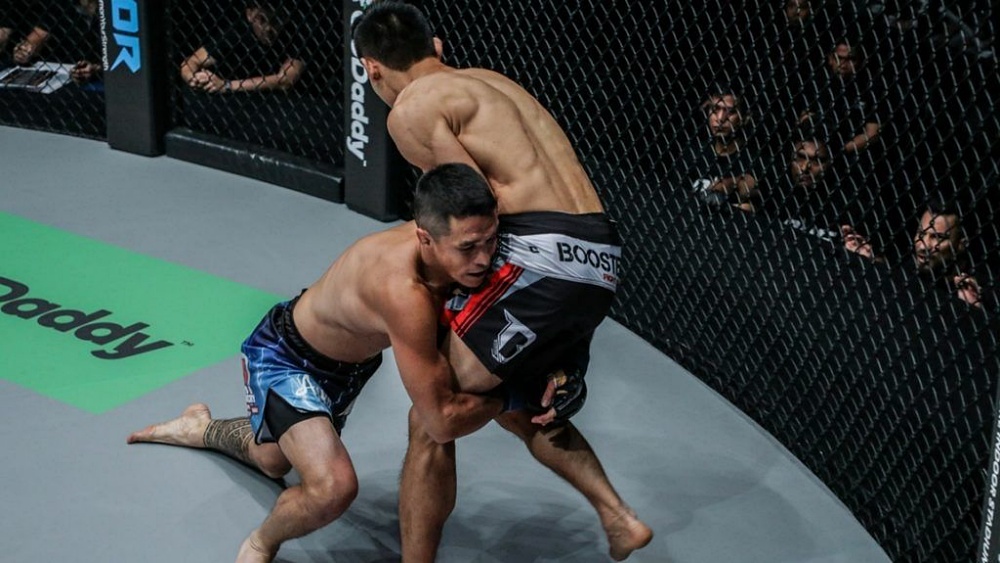The world of Brazilian Jiu-Jitsu is filled with many unique techniques and positions. One of the things that set BJJ apart from other grappling arts is the fact that Jiu-Jitsu allows more freedom to fight in the guard position. Because of this, many techniques have been developed to enable practitioners to safely fight off their backs. The X-Guard is an excellent example of this. It is a dynamic and versatile guard that offers users opportunities for sweeps and submissions. Today, we will discuss this classic technique and explore its many variations.
What Is The X-Guard In BJJ?
The X-Guard is a ground control position where you are on your back with your legs entangling one of your opponent’s legs, creating an ‘X’ formation with your limbs. This position typically involves placing one foot on the opponent’s hip and using the other foot to hook behind the opponent’s far knee or thigh, allowing for significant control over the opponent’s movement and balance. The X-Guard is a favored move of BJJ legend Marcelo Garcia, and he used the guard to defeat some of the world’s top competitors.
Benefits Of The X-Guard
The X-Guard is highly regarded for its effectiveness in unbalancing and controlling opponents, making it a preferred choice in both Gi and No-Gi grappling. It offers high leverage for sweeps thanks to it’s underhooking and positioning beneath the opponent, which makes executing sweeps easier. The guard’s versatility is another significant advantage; it allows for various transitions to other guards or stand-up positions, providing you with multiple offensive and defensive strategies during a match.
The X-Guard also provides strong defensive attributes by keeping the opponent off-balance and defensive, which is crucial in competitive grappling. From the X-Guard, you can initiate several submissions, including leg locks and back takes, leveraging the controlled yet vulnerable state of your opponents.
Understanding Kuzushi
Kuzushi, a term borrowed from Judo, refers to the concept of balance breaking. In the context of the X-Guard, applying Kuzushi involves manipulating the opponent’s weight and balance to create openings for attacks or to execute sweeps. Effective use of the X-Guard relies heavily on your ability to off-balance your opponent continuously, thereby making it easier to control and eventually submit or transition to a more dominant position.
The Relationship Between The Single Leg X-Guard And The X-Guard
The Single Leg X-Guard (SLX) is often seen as a subset of the X-Guard but focuses more specifically on isolating one of the opponent’s legs between your legs. This position shares many principles with the broader X-Guard but simplifies control to a single leg, making it particularly effective for setups into straight ankle locks or heel hooks in No-Gi grappling. The transition between SLX and the traditional X-Guard is seamless, allowing you to adapt based on your opponent’s reactions and the rules of the competition.
5 Variations Of X-Guards
Now that we understand the basics of the X-Guard, let’s take a look at 5 common X-Guard variations in modern BJJ.
1) Single Leg X-Guard (SLX)
The Single Leg X-Guard focuses on one leg, making it highly effective for direct attacks on the trapped leg. This variation is particularly useful for managing opponents trying to pass the guard because it allows for greater control of one leg and the ability to disrupt balance efficiently. The SLX is a prime guard for those who love to attack the legs, as the leg configuration (ashi garami) is the same as when attacking straight ankle locks.
2) Overhook X-Guard
This variation involves an overhook on the opponent’s leg while using the X-Guard configuration. The Overhook X-Guard provides tighter control over the opponent’s limb and is beneficial for setting up technical sweeps or transitions to standing positions, making it a strategic choice in both defensive and offensive scenarios.
3) Standard X-Guard
The Standard X-Guard is the classic form of this position, where you hook one leg inside and control the other with your foot on the opponent’s hip. This setup offers a balance of control and flexibility, allowing you to react to the opponent’s movements and adjust your technique accordingly.
4) Wrong Way Or Reverse X-Guard
The Reverse X-Guard reverses the typical leg positioning, which creates unique angles and leverages that are particularly effective for sweeps and leg submissions against opponents with a strong base and balance. This variation can catch opponents off-guard, making it a powerful tool in your arsenal.
5) Scissor X-Guard
Integrating elements of the scissor sweep into the X-Guard, this variation adds a layer of complexity and deception to the position. The Scissor X-Guard is highly effective against advancing opponents as it combines the destabilizing effects of the scissor motion with the control and versatility of the X-Guard.
Tips And Considerations
When incorporating the X-Guard into your grappling practice, there are several tips and considerations that can enhance your effectiveness and ensure a smoother learning curve. Success with the X-Guard doesn’t come overnight and requires dedicated practice. Spend time drilling each variation of the X-Guard with a focus on the transitions between them to build your muscle memory and increase your comfort level with these positions under pressure.
Understanding and manipulating balance and leverage are crucial in the X-Guard. Practice the art of off-balancing your opponent consistently by pulling at angles that compromise their stability. The more you understand the nuances of leverage from the X-Guard, the more effectively you can control and sweep your opponents.
Your hooks are your primary tools for control in the X-Guard. Keep them active and engaged. Lazy hooks can lead to lost control and potentially getting passed. Always adjust your hooks to respond to your opponent’s movements and attempts to escape or pass. While the legs do a lot of work in the X-Guard, remember to use your hands, arms, and torso as well. Your upper body should aid in off-balancing, controlling, and executing techniques from the guard, which can include collar grips, sleeve grips, and underhooks, depending on whether you are practicing in gi or no-gi.
Every opponent will react differently to the X-Guard, so be prepared to adapt your strategy based on their responses. Some may try to muscle out, while others might use technical escapes. Flexibility in your approach allows you to counter these moves effectively. By keeping these tips in mind, you will enhance your proficiency with the X-Guard and become a more rounded and formidable grappler. Whether for competition or general practice, mastering the X-Guard and its variations is essential for any serious BJJ practitioner aiming to improve their ground game.
You may also like:

















